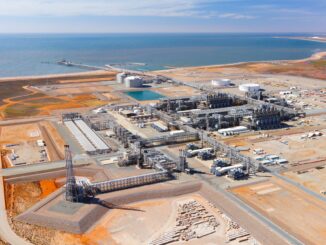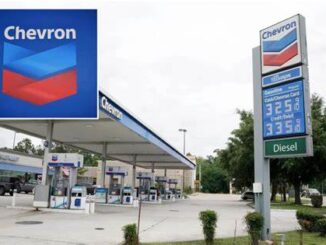
Are you from California or New York and need a tax break?
The deal’s closure comes on the heels of an arbitration decision that rejected ExxonMobil’s claim to a right of first refusal over Hess’s 30% stake in the Guyana joint venture. Exxon had argued that the partnership agreement entitled it to match any offer for Hess’s interest, a move that stalled the Chevron-Hess merger announced in October 2023. Chevron CEO Mike Wirth had publicly stated he would abandon the acquisition if the ruling went against them, underscoring the high stakes involved. With the dispute resolved, Chevron has issued approximately 301 million shares of its common stock to Hess shareholders, who receive 1.0250 Chevron shares for each Hess share held. The all-stock transaction values Hess at an enterprise level of $60 billion, including debt, and preserves Chevron’s cash reserves while transferring Hess’s obligations to its balance sheet.
Background on the Battle: A Clash of Titans in Guyana
Investor Lens: Analyzing Recent Shareholder Reports
- Chevron’s Q1 2025 Performance: Chevron reported net income of $3.5 billion, with adjusted earnings reaching $3.8 billion. The company demonstrated robust cash generation, returning $6.9 billion to shareholders through dividends and buybacks—a figure that included $2.2 billion in Hess share acquisitions as preparatory steps for the deal. While specific revenue wasn’t detailed, Chevron’s focus on high-margin production and disciplined capital allocation shone through. Debt levels remained manageable, supporting its investment-grade rating and enabling the all-stock Hess deal without straining liquidity.
Investors should note Chevron’s consistent cash returns, which averaged over $6 billion quarterly in recent periods, signaling a shareholder-friendly approach that the Hess integration is poised to enhance.
- Hess’s Q1 2025 Performance: Hess posted net income of $430 million ($1.39 per share), down from $972 million in Q1 2024 due to lower commodity prices, though adjusted net income was $559 million ($1.81 per share). Revenues totaled $2.938 billion, with production steady at 476,000 barrels of oil equivalent per day (boepd). Debt stood at $5.3 billion (27.8% debt-to-capitalization ratio), a level Chevron will absorb but offset with Hess’s high-cash-flow assets. Notably, Hess skipped its earnings call due to the pending merger, emphasizing the deal’s overhang. For investors, Hess’s Guyana exposure—driving much of its value—offers low-breakeven production (under $30 per barrel), making it an attractive bolt-on for Chevron.
- ExxonMobil’s Q1 2025 Performance: ExxonMobil’s Q1 results showed strength in its integrated model, though exact figures from the earnings release indicate solid upstream earnings offset by downstream pressures (specific net income not detailed in available summaries, but the company highlighted positive cash flows). As Exxon prepares to release Q2 2025 results on August 1, investors should watch for any arbitration-related charges or strategic pivots. The loss in this case may pressure Exxon to seek alternative growth avenues, potentially impacting its shareholder returns if Guyana consolidation plans falter.
Overall, these reports underscore a sector rebounding from 2024’s price dips, with Brent crude averaging around $80-85 per barrel in Q1 2025. Chevron and Hess exhibited stable production and cost control, while Exxon’s diversified portfolio buffered volatility. Investors evaluating post-merger performance should prioritize metrics like free cash flow yield and return on capital employed (ROCE), where Chevron targets double-digit ROCE at mid-cycle prices.
Bolstering Chevron’s Balance Sheet: Synergies and Strategic Upside
- Asset Diversification and Production Boost: Adding Hess’s Guyana stake (now 30% for Chevron) and Bakken acres extends Chevron’s production growth into the 2030s, with expected output rising to over 4 million boepd by 2027. This high-margin, low-carbon-intensity portfolio reduces breakeven costs and mitigates geopolitical risks.
- Financial Synergies and Tax Advantages: Chevron anticipates $1 billion in annual run-rate cost synergies by end-2025, from operational efficiencies and supply chain optimizations. Additionally, the deal unlocks up to $15 billion in tax benefits previously sidelined on Hess’s books, improving cash flows and supporting debt management. Hess’s $5.3 billion debt transfers to Chevron, but the all-stock structure maintains balance sheet flexibility, enabling continued $20 billion annual share buybacks and 8% dividend growth.
- Shareholder Value Creation: The merger is accretive to cash flow per share starting in 2025, post-synergies and Guyana ramp-ups. Chevron’s capital expenditures will range $19-22 billion annually, funding organic growth while sustaining payouts. For investors, this translates to enhanced total returns, with the combined entity better equipped to navigate energy transitions and commodity cycles.
In summary, Chevron’s victory not only resolves a contentious chapter but fortifies its position as a leading integrated energy player. Investors should monitor upcoming guidance at Chevron’s November 12, 2025, Investor Day for detailed projections. While ExxonMobil licks its wounds, the deal signals consolidation trends in oil, rewarding those with strong balance sheets and strategic foresight.
As always, consult financial advisors for personalized investment decisions in this dynamic sector.





